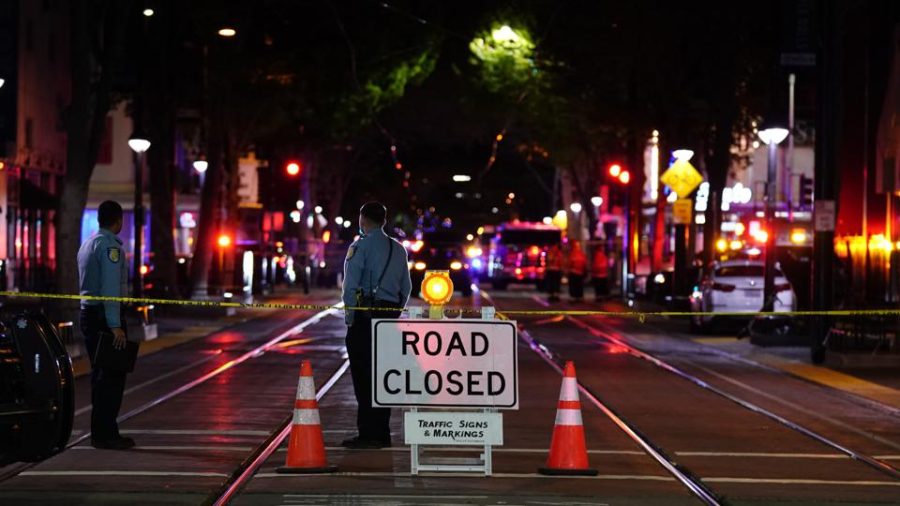More Legislature is Not the End All, Be All Answer to Ending Gun Violence
A deadly shooting in Sacramento, California, on April 3 has sparked discussion over whether or not gun violence can really be controlled by the law. California has some of the strictest gun laws in the country, which include requiring background checks and identification for the sale and purchase of all weapons and ammunition, banning large capacity magazines and closely monitoring the registration of assault weapons. With all of these restrictions in place, how can deadly shootings still occur? In reality, the answer to ending gun violence may not come from legislation.
Around 2 a.m. on April 3, a fight broke out outside of a nightclub in Sacramento. Moments later, gunshots rang out, killing six and injuring 12. Sacramento police chief Kathy Lester said that it is “confirmed that there are multiple shooters” involved in the deaths of the three men and three women.
Multiple shooters being involved with the killings can mean one of a few things: Multiple people evaded California’s strict weapon purchasing laws and bought the guns illegally, their potential criminal records or history of gun violence weren’t picked up by the background checks done before the gun purchases or the background checks weren’t effective enough to predict future violent activity. Adding more restrictions is unlikely to combat any of the following and will likely further polarize gun control advocates and opposers.
Combating gun violence should begin by looking at examples of countries successful in keeping gun-related deaths low. Much of Europe and South Asia, as well as countries such as Canada and Australia, have rates of less than one violent gun death per 100,000 people. Asian countries such as Singapore, China and Japan boast rates of less than 0.3 violent gun deaths per 100,000 people. Many low-income countries have low gun death rates but so do many developed countries around the world, such as South Korea and the United Kingdom. Ali Mokdad, a professor of global health and epidemiology, noted, “It is a little surprising that a country like ours should have this level of gun violence … If you compare us to other well-off countries, we really stand out.” Venezuela, El Salvador, the Philippines and Thailand also have unusually high levels of gun-related deaths, but Mokdad commented that those are driven partially by drug trafficking and gang activity and, in the case of Venezuela, political unrest. The causes of gun violence in the United States, however, do not stem from these same issues. Socioeconomic issues such as “income inequality, poverty, underfunded public housing, under-resourced public services, underperforming schools, lack of opportunity and perceptions of homelessness, and easy access to firearms by high-risk people,” are cited in The Educational Fund to Stop Gun Violence as the roots of gun violence and deaths in America.
A study done by the Harvard School of Public Health found a strong statistical correlation between rates of gun violence — including firearm-assisted homicide, robbery and assault — and income inequality and poverty in the United States. Additionally, exposure to gun violence has been shown to lead to mental health issues such as post-traumatic stress disorder, depression and stunted cognitive and emotional development, possibly leading to the above issue of easy weapon access by high-risk people. Additionally, states with high poverty rates often have higher gun-related mortality rates, where they can’t get the same access to mental health services as states with lower poverty rates and often lower gun-related mortality rates.
If gun violence stems largely from socioeconomic issues, more restrictive gun laws are unlikely to remedy the issues. Making more weapons illegal won’t stop people from getting them and hurting people, because their illegality doesn’t mean people can’t or won’t access them. Lowering rates of gun violence and gun-related deaths requires attacking the roots of the issue.
With California’s gun restrictions, it is ranked 43 for the states with the highest rates of gun violence in the U.S. in 2018. These restrictions definitely curb rates of violence, but they do not address some of the roots of the issues as California has the 20th highest poverty rate in the United States. Massachusetts, the state with the lowest rate of gun violence in 2018, has the ninth lowest poverty rate in the United States. Poverty and income inequality rates must be addressed before restrictions can be used to supplement. For example, New Hampshire, the state ranked 38 in terms of gun violence, has the lowest poverty rate in the U.S. at 7.3%. New Hampshire, however, does not require a permit to carry a handgun openly or concealed like 11 out of the 12 states with lower gun violence rates. In this example, more restrictions may be beneficial to curbing rates of gun violence and gun-related deaths but only in conjunction with its low poverty rates.
Restrictions have been proven to reduce gun violence, but to completely eradicate the astonishing amount of gun-related deaths and injuries, socioeconomic issues need to be addressed before more weapon restrictions are added.
Ava Knight, FCRH ’25, is a neuroscience major from Seattle, Wash.











































































































































































































Marty • Apr 15, 2022 at 10:57 am
Bad people would be less inclined to use guns in violent acts if the average Jane and Joe good person was able to legally carry a gun. Your attempt at income inequality as a cause is really lame.